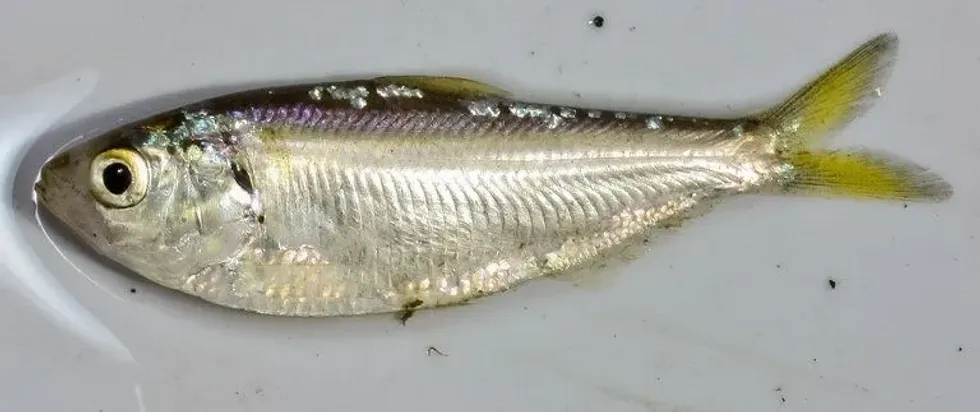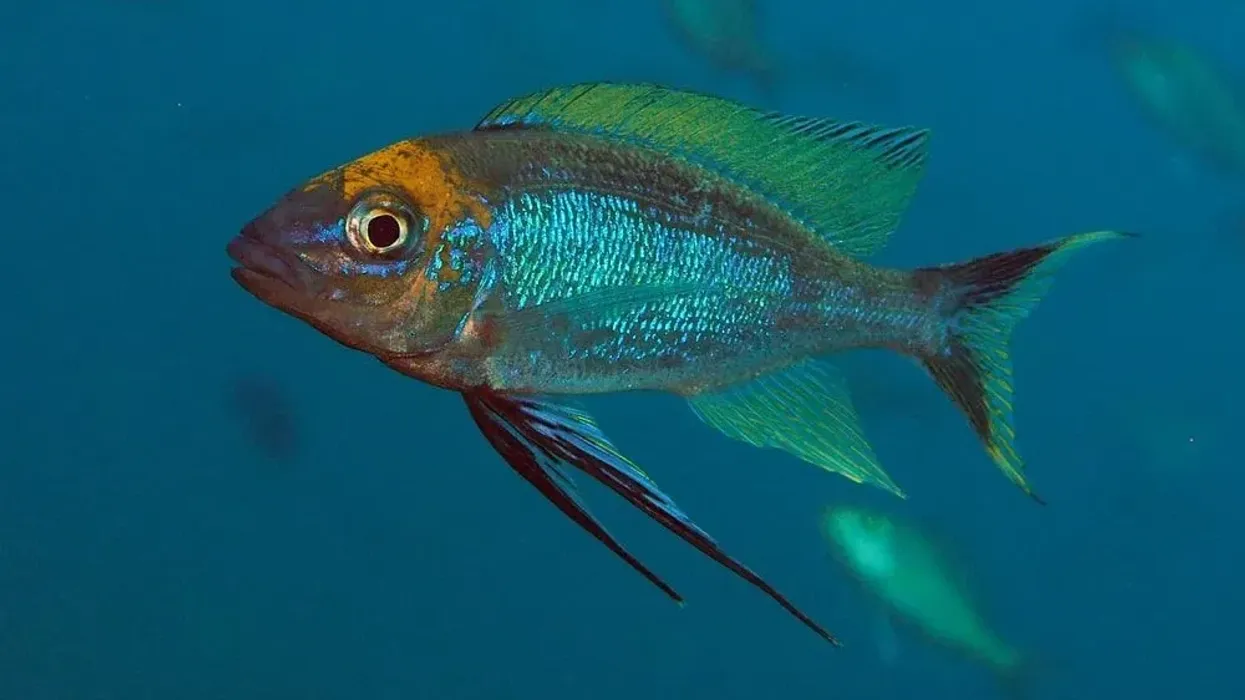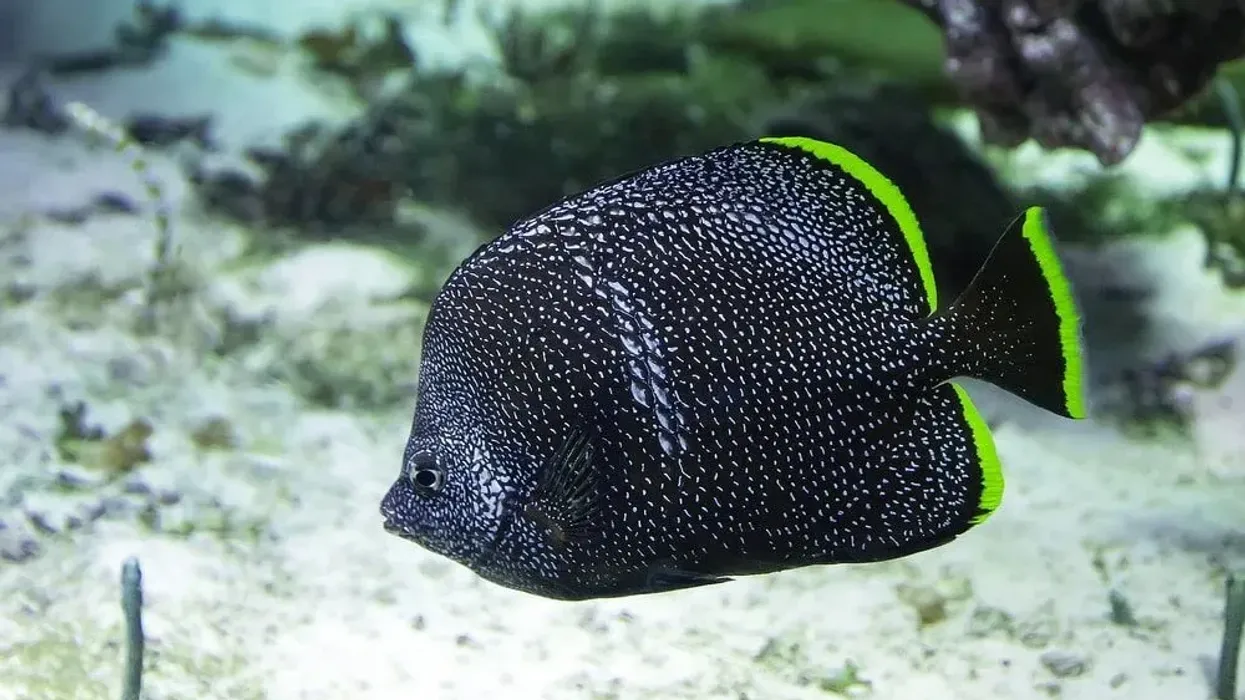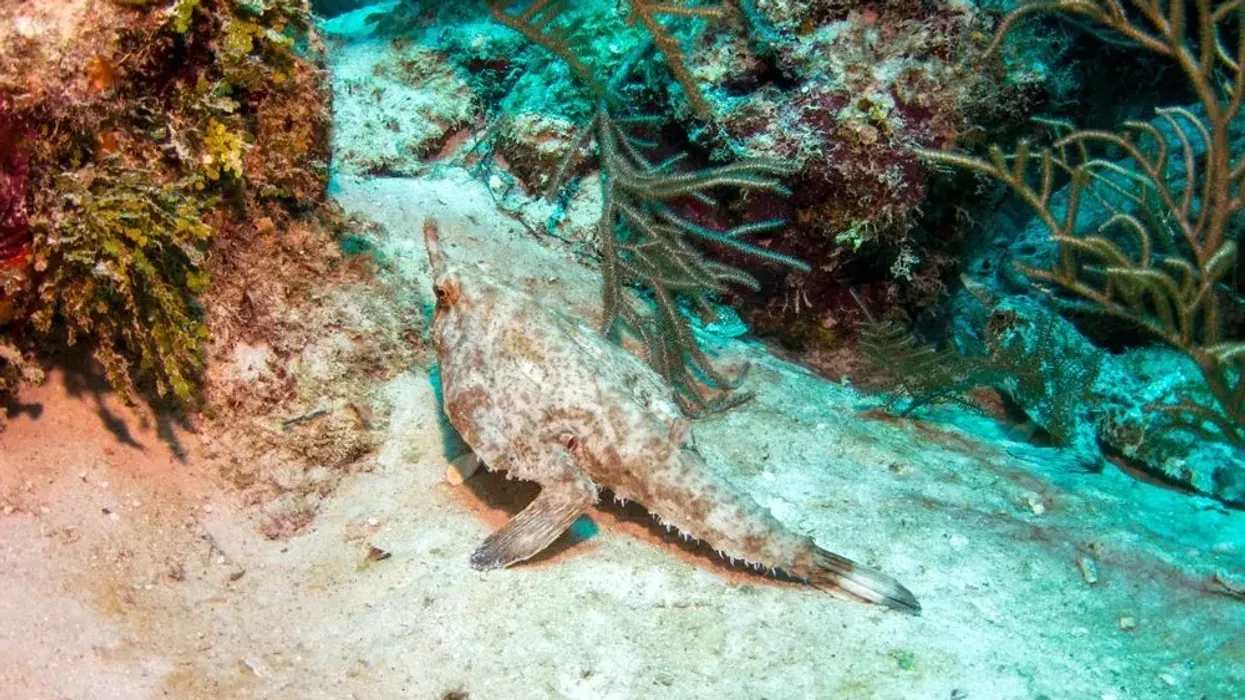A small pelagic fish that is quite commonly found in rivers, large streams, reservoirs, and ponds, the threadfin shad (Dorosoma petenense) is endemic to the southeastern region of the United States in Florida, Georgia, Texas, west of the Appalachians, and many more. The species was introduced in the country as forage for game fish.
The fish has elongated dorsal fin rays, and its mouth is more terminal without projecting the upper jaw. The fins of the fish are generally yellow, especially the caudal fin, the back is gray and possesses a dark spot on the shoulder. The anal fin has 20-28 rays. The average length of the species is 1-8 in (2.5-20.3 cm).
The species is nocturnal and often found in schools with gizzard shad on the surface of the water at dawn and dusk.
Also, the fish is quite sensitive to changes in the water temperature and generally perishes when the temperature drops to 42 °F (5.6 °C). The fish is often preyed upon by other fishes such as striped bass, largemouth bass, smallmouth bass, catfish, and many more.
The International Union for Conservation of Nature listed threadfins under Least Concern and predation is considered as the only major threat to the species.
Keep on reading to learn more interesting facts about the threadfin shad. For more relatable content, check out these gar facts and Arctic char facts for kids.
Threadfin Shad Interesting Facts
What type of animal is a threadfin shad?
The threadfin shad (Dorosoma petenense) is endemic fish to the southeastern region of the United States like Florida, Georgia, Texas, west of the Appalachians, and many more. The threadfin shad spawn in the spring and early summer season.
What class of animal does a threadfin shad belong to?
The threadfin shad belongs to the class of Actinopterygii, the family of Clupeidae, and the Dorosoma genus.
How many threadfin shads are there in the world?
The exact population of threadfin-shad fishes is not known as of now but the species is widely distributed to several parts of the United States. The species is generally used as a forage fish.
Where does a threadfin shad live?
While talking about the threadfin shad range, the species is endemic to the southeastern region of the United States such as Florida, Georgia, Texas, west of the Appalachians, and many more.
What is a threadfin shad's habitat?
The threadfin shad (Dorosoma petenense) inhabits the lakes, rivers, and ponds. The construction of dams has created more reservoirs that have been provided more water bodies to these fish.
Also, the fish is quite sensitive to changes in the water temperature and generally perishes when the temperature drops to 42 °F (5.6 °C) in its habitat. These fish remain in open water throughout their life.
Who do threadfin shads live with?
The threadfin shad fish is generally found in schools or groups. Generally, the gizzard shad fish and threadfin shad are found in a single school. Also, these fishes spawn during the spring season.
How long does a threadfin shad live?
The average life expectancy of a threadfin shad is around two to three years. It is also believed that the fish competes with young largemouth bass fishes for the plankton. The life expectancy of species like gizzard shad generally reaches 10 years if they escape predation.
How do they reproduce?
While talking about the threadfin shad life cycle, the threadfin shad spawn generally in the spring and early summer season. The water temperatures above 60-70 °F (15.6-21.1 °C) usually suit spawning. Also, a secondary spawn occurs in the late fall season.
Spawning primarily occurs during the dawn on available vegetation, females lay around 2,000-24,000 eggs while the eggs get stick to submerged and floating objects. Like adults, the young ones feed on plankton.
What is their conservation status?
The International Union for Conservation of Nature listed threadfins as Least Concern and predation is considered as the only major threat to the species. The population of threadfin shad seems to be stable as of now.
Threadfin Shad Fun Facts
What do threadfin shads look like?
The threadfin shad has elongated dorsal fin rays, and its mouth is more terminal without a projecting upper jaw. The fins of the fish are generally yellow, especially the caudal fin, the back is gray and possesses a dark spot on the shoulder. The anal fin has 20-28 rays.
How cute are they?
These tiny fish are quite cute, anyone would love to see them feed on plankton in the open water. Also, their schools would look so fascinating.
How do they communicate?
Very little information regarding the communication patterns of the forage fish is available as of now but it is believed that the fish follows similar methods like others. The fish generally remain active during the twilight hours and use visual and tactile cues to communicate with each other.
When water temperatures increase to 60-70 °F (15.6-21.1 °C) in the summer season, the process of spawning starts.
How big is a threadfin shad?
The forage fish is quite small and its average length is around 1-8 in (2.5-20.3 cm). They are smaller than American shads and Allis shads.
How fast can a threadfin shad swim?
The exact speed of the threadfin shad is not known but the fish generally moves along with the school. An interesting fact about these fishes is that they often compete with other species for their food. They are rarely found deep in the water.
How much does a threadfin shad weigh?
The exact weight of the fish, threadfin shad is not known as of now.
What are the male and female names of the species?
There are no specific names given to the male and female fish, people generally refer to both as threadfin shads.
What would you call a baby threadfin shad?
No particular name is given to the babies of threadfin shad, people often use terms such as juveniles or young ones to refer to them.
What do they eat?
The threadfin shads are omnivore fishes that generally feed on plankton. The fish is a great food source for species such as smallmouth bass, largemouth bass, yellow bass, striped bass, catfish, and many more.
Are they dangerous?
No, these fish are not considered dangerous, they are generally used as forage fish. It is always advised not to harm them.
Would they make a good pet?
People generally do not consider them great pets.
Did you know...
The threadfin shad bait is highly used to catch catfish as the species releases oil into water that attracts big fishes.
People generally consider threadfin shads a great source of omega-3.
The American gizzard shad is also known as mud shad.
What's the difference between gizzard shad and threadfin shad?
Both species, the gizzard shad, and threadfin shad are endemic to the United States but are quite different from each other.
The average length of the threadfin shad is 1-8 in (2.5-20.3 cm) while the gizzard shad is 11.2-15.7 in (28.4-39.9 cm) long. The mouth of the former species is more terminal without a projecting upper jaw while the latter has a short and wide mouth with a smaller lower jaw.
The anal fin of the threadfin shad has 20-28 rays while the gizzard shad possess 25- 36 soft rays on the anal fin. The dorsal fin of the latter species starts behind the insertion of pelvic fins. Unlike the threadfin shad, the gizzard shad has silvery-green coloration.
Is the threadfin shad endangered?
The International Union for Conservation of Nature listed threadfins as Least Concern and predation is considered as the only major threat to the species and it is often preyed upon by fishes such as striped bass, largemouth bass, smallmouth bass, catfish, and many more.
The population seems to be stable as of now but is generally used as a forage fish.
Here at Kidadl, we have carefully created lots of interesting family-friendly animal facts for everyone to discover! Learn more about some other fish from our brook trout facts or pilchard facts pages.
You can even occupy yourself at home by coloring in one of our free printable Threadfin shad coloring pages.









